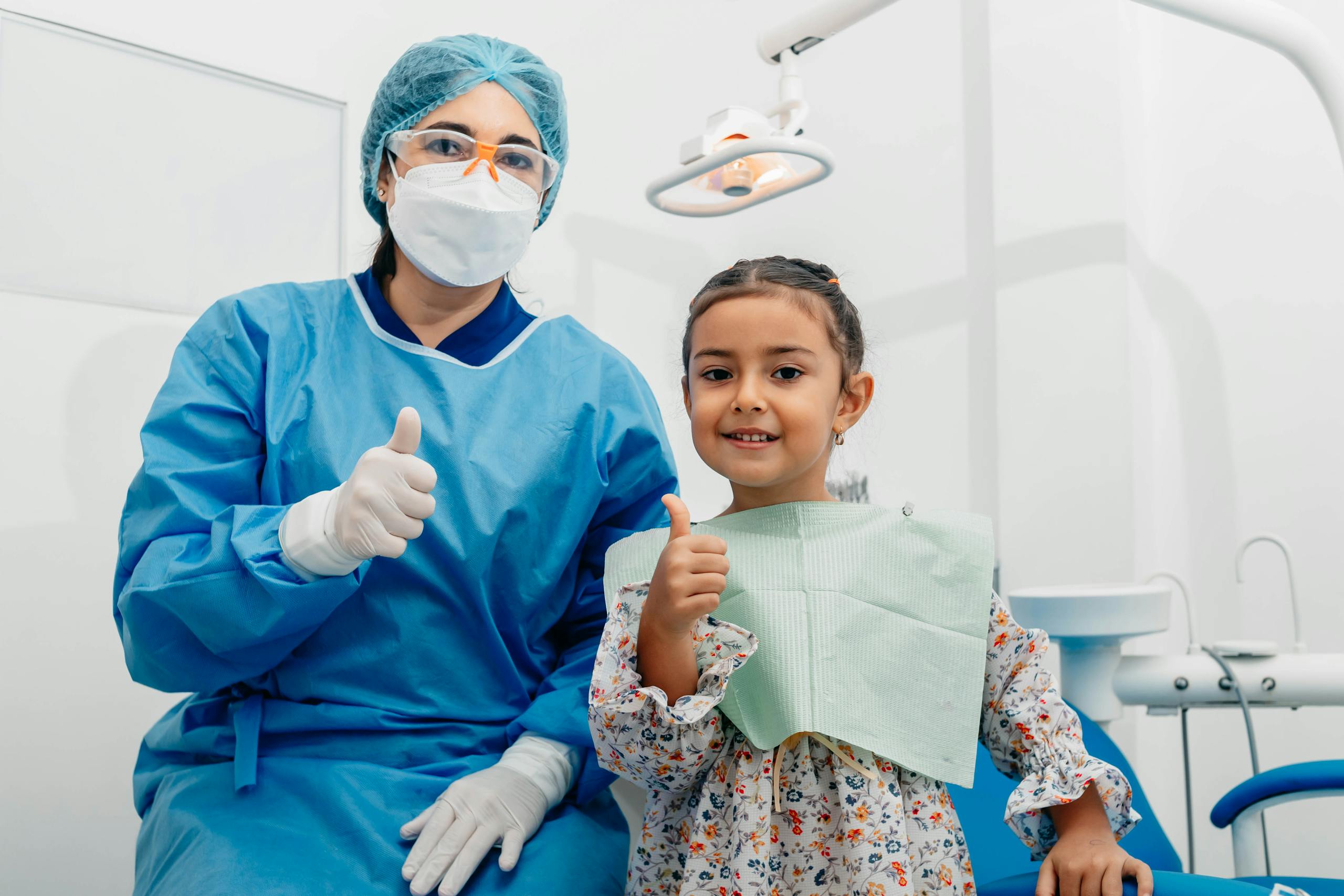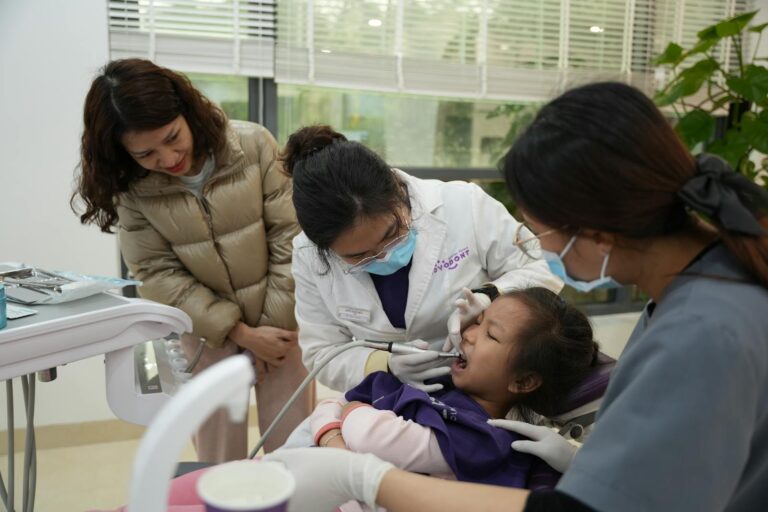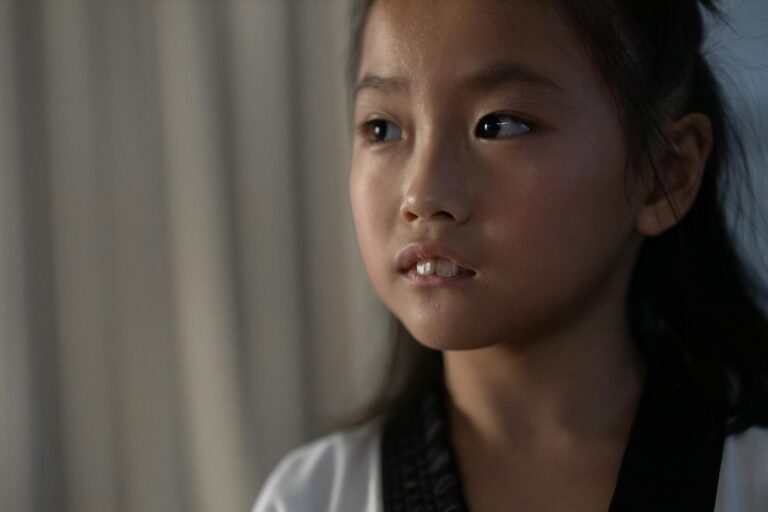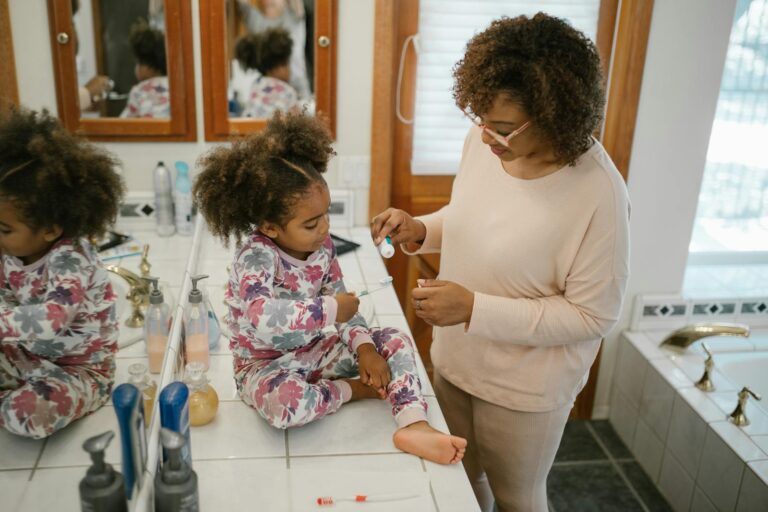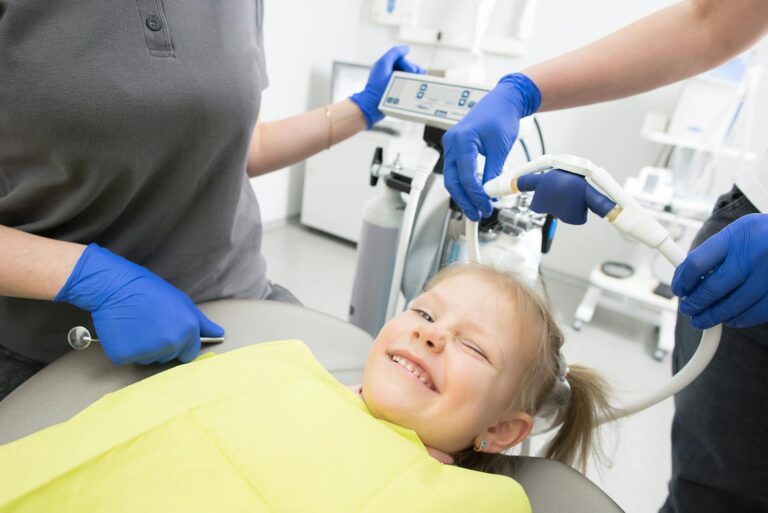How to Prepare a Toddler for Their First Dental Visit
Taking your toddler to the dentist for the first time can feel like a big milestone—and for many parents, a nerve-wracking one. Will they cry? Will they cooperate? Will they even open their mouths? These are all valid concerns, but the truth is, with the right preparation, your child’s first dental visit can be a positive and even fun experience.
As a dentist who works with little ones every day, I’ve seen firsthand how a bit of thoughtful prep at home can make a world of difference in the dental chair. So here’s how to get started.
Start Talking about the Dentist Early — and Talk About It Often
Toddlers feel most secure when they know what to expect. That’s why it’s helpful to start introducing the idea of the dentist well before the actual appointment. A few days in advance, begin weaving it into your daily conversations in a relaxed and upbeat tone.
You don’t need to give a detailed explanation—just something simple and friendly, like:
“We’re going to visit the dentist soon! The dentist is a kind doctor who helps keep our teeth clean and strong.”
The goal is to make the dentist sound like someone fun and helpful, not scary or unfamiliar.
Be mindful of the words you use. Even if you mean well, saying things like, “Don’t worry, it won’t hurt,” can actually make children more anxious, because it introduces the idea of pain. It’s better to focus on positive actions:
“The dentist will count your teeth!”
“You’ll get to sit in a big chair and open wide like a lion!”
These kinds of phrases are easy for toddlers to understand and imagine, and they help create curiosity instead of fear.
By starting early and keeping the mood light, you’re building comfort and trust—before your child even walks into the dental office.
Incorporate the Dentist into Your Toddler’s Storytime Routine
One of the easiest and most effective ways to prepare a young child for their first dental visit is through storytime. Toddlers love stories—they help them understand the world around them, process new experiences, and connect emotionally with characters who feel familiar.
There are many wonderful children’s books specifically designed to introduce the idea of going to the dentist in a gentle and playful way. For example, titles like “The Berenstain Bears Visit the Dentist” or “Peppa Pig: Dentist Trip” follow beloved characters as they go through the same experience your child is about to have. These books walk through the basic steps of a dental visit—sitting in the chair, opening wide, getting a quick check-up—without any pressure or fear.
Reading these stories together a few times in the week leading up to the appointment helps normalize the idea of going to the dentist. It turns something unfamiliar into something your child has “seen” before through the characters they trust. That familiarity can give them a sense of control and predictability, which toddlers deeply crave.
You can take it a step further by pausing during the story to ask questions like:
“What do you think the dentist is doing here?”
“Can you open your mouth like Peppa?”
“Would you like to sit in a big chair like that?”
These little moments turn reading into an interactive and comforting preparation tool. Over time, your toddler begins to see the dental visit not as something scary, but as an adventure they’re ready for—just like their favorite storybook characters.
Turn Playtime into a Pretend Dental Visit at Home
Toddlers learn best through play—it’s how they explore, make sense of new situations, and build confidence. So one of the most effective ways to prepare your child for their first dental appointment is to bring the experience into their world of imagination.
Set up a mini “dental office” right in your living room. You don’t need any fancy tools—a comfy chair, a toothbrush, and a mirror will do just fine. Start by letting your toddler be the patient. Gently guide them through the steps they might experience during a real visit:
- Ask them to lie back in the chair like they would at the dental office.
- Count their teeth out loud: “Let’s see… one, two, three…”
- Use a small mirror or spoon to pretend to “check” their teeth.
- Mimic brushing or cleaning in a fun, gentle way.
Once they’ve had a turn as the patient, switch roles and let them play the dentist. Hand them a toy toothbrush and let them examine a stuffed animal’s or doll’s mouth. This role reversal is not just fun—it’s empowering. It helps your child feel in control and familiar with the steps of a dental visit from both sides.
As you play, keep the tone cheerful and relaxed. You can even make up little phrases the dentist might say, like:
“Open wide like a lion!”
“Wow, your teeth are so clean!”
“Great job sitting still!”
Repeating this pretend routine a few times before the appointment builds familiarity and reduces anxiety. When your child steps into the actual dental office, it won’t feel like a strange or scary place. Instead, it will feel like something they’ve done before—just like playtime at home.
Pick the Right Time of Day for the Appointment
Timing really matters when it comes to a toddler’s first dental visit. Young children are still learning how to manage big feelings like nervousness or excitement, and their ability to stay calm and cooperative often depends on how well they’ve slept or eaten. That’s why choosing the right time of day can make the experience much smoother—for your child and for you.
Ideally, schedule the appointment for a time when your child is naturally at their best. For most toddlers, that means earlier in the day—usually in the morning after breakfast, when they’re well-rested, fed, and more likely to be in a good mood. Another great option is soon after their midday nap and a small snack, when they’ve had a chance to recharge.
What you want to avoid are appointments during nap times, or those late afternoon hours when your child may be tired, overstimulated, or hungry. That’s often when meltdowns are more likely to happen—and no one wants their first dental visit to be remembered with tears.
Think of it this way: when your toddler is well-fed, well-rested, and emotionally balanced, they’re more likely to feel curious and open to new experiences like visiting the dentist. It sets the tone for a more successful and relaxed visit—not just this time, but for future appointments as well.
Be Mindful of Tour Own Emotions
One of the most important—but often overlooked—ways to prepare your toddler for their first dental visit is to check in with yourself. Children, especially toddlers, are incredibly tuned in to their parents’ emotions. Even before they fully understand words, they’re experts at reading tone of voice, facial expressions, and body language. If you’re feeling nervous, anxious, or uncertain, your child will likely sense it—and mirror those emotions.
That’s why it’s so important to approach the visit with calm confidence. Even if you have your own dental anxieties (which many adults do), try your best not to project them. Speak about the appointment in a positive, matter-of-fact way. For example, instead of saying, “I hope it won’t be scary,” say, “It’s going to be fun! The dentist will count your teeth and show you some cool tools.”
Your tone matters just as much as your words. A cheerful voice, a relaxed posture, and a warm smile can go a long way in making your child feel safe and curious, rather than unsure or afraid.
If you’re feeling a bit nervous inside, that’s okay—just try not to let those feelings take center stage. Remember, your child is looking to you for reassurance. If you treat the dental visit as something ordinary and even a little exciting, your child is much more likely to follow your lead.
At the end of the day, your attitude helps shape their experience. When you approach the visit with positivity and ease, you’re not just preparing them for one appointment—you’re helping lay the foundation for a lifetime of trust and comfort in dental care.
Bring along a Comfort Item to Help Your Child Feel Secure
For a toddler, visiting the dentist for the first time means stepping into a completely unfamiliar environment—bright lights, new faces, unfamiliar sounds, and strange equipment. While we as adults understand what’s going on, a toddler sees it all through a different lens. That’s why bringing a familiar object from home can be incredibly helpful in creating a sense of safety and calm.
Think of your child’s favorite stuffed animal, soft blanket, or even a small toy they carry everywhere. These objects aren’t just “things”—they’re sources of emotional comfort. They remind your child of home, routine, and everything that feels familiar and safe. Holding onto a beloved item during the dental visit gives them something grounding to focus on when everything else feels new or uncertain.
When toddlers are nervous, they often reach for what’s familiar. Having their favorite plush friend in their arms while sitting in the dental chair can make a huge difference. It gives them a sense of control and reassurance—almost like bringing a little piece of home with them.
Some dental offices even encourage children to bring their toys. We’ll sometimes let them “check” the toy’s teeth first before we check theirs, turning the experience into a playful moment instead of a scary one.
So before the appointment, ask your child, “Would you like to bring your teddy bear to show the dentist?” Framing it as a fun idea helps your child feel involved and in charge.
In short, comfort items might seem small, but in a new setting like a dental office, they can be powerful tools for building trust, calming nerves, and creating a positive first experience.
Trust the Dentist and Let Them Take the Lead during the Visit
Once you’ve arrived at the dental office and your child is checked in, this is where it helps to take a step back and let the dental team guide the experience. Pediatric dentists and their staff are specially trained not only in oral care but in child psychology, communication, and behavior management. They know how to approach toddlers gently, gain their trust, and adjust their approach based on the child’s mood, comfort level, and age.
While it’s natural for parents to want to explain everything or comfort their child during the visit, sometimes too much involvement can unintentionally create confusion or tension. Children often respond best when there’s one calm, clear voice guiding the moment—and during the appointment, that voice is usually the dentist’s or the assistant’s.
Most first dental visits for toddlers are intentionally kept very simple and non-invasive. In many cases, the dentist will:
- Let the child explore the room at their own pace
- Use gentle language and playful comparisons (like calling the suction “Mr. Thirsty”)
- Count the teeth out loud using their fingers or a small mirror
- Do a brief visual check of the gums, bite, and jaw
- Avoid anything that might feel intimidating, like loud tools or reclining the chair fully
There’s no rush and no pressure. If the child is hesitant, we might have them sit on your lap or simply allow them to observe for a few minutes before we do anything. Sometimes we won’t even clean the teeth—we’ll just say hello, take a quick peek, and save the rest for next time.
At the end of the visit, we often offer small rewards like a toothbrush, a sticker, or a toy from the prize box. These small tokens help end the visit on a high note and create a positive memory.
By allowing the dental team to gently lead the process, your child learns that this is a safe, welcoming place—and that the people here can be trusted. That trust, built slowly and patiently, is the beginning of a healthy relationship with dental care for years to come.
Celebrate the Experience
Once the dental visit is over, whether your toddler laughed through it or needed a few tears and cuddles to get through, take a moment to acknowledge their effort in a genuinely positive way. This moment right after the appointment is incredibly important because it helps shape how your child will remember the experience—and how they’ll feel about going back.
Rather than focusing on what didn’t go perfectly (maybe they didn’t open their mouth wide or were too shy to talk), emphasize what they did well. Praise even the smallest victories. For example:
“You were so brave when the dentist counted your teeth!”
“I’m really proud of how you sat in the chair and listened!”
“You did such a great job trying something new today!”
This kind of positive reinforcement is powerful. It tells your child, “You did something important—and you did it well.” It boosts their confidence and helps them feel proud of themselves, which makes them much more likely to approach the next visit with excitement rather than fear.
You can even turn the whole experience into a mini celebration. Stop for a favorite snack, go to the park, or just spend a few extra minutes playing together after the visit. Creating a warm, happy memory immediately after the appointment helps associate the dentist with something joyful, rather than stressful.
And if things didn’t go as smoothly as you hoped? That’s okay. Don’t scold or show disappointment. Toddlers are still learning how to manage new situations. Instead, offer calm reassurance:
“It’s okay to feel unsure. You did something brave today just by showing up.”
Each visit is a step forward. By celebrating the effort—not just the outcome—you’re building trust, resilience, and a positive attitude that can last a lifetime.
Remember, the Goal Isn’t Perfection—It’s Building a Positive Foundation
It’s completely normal for parents to hope that their child’s first dental visit goes smoothly from start to finish. But the truth is, it doesn’t have to be perfect for it to be meaningful and valuable.
Some toddlers might walk in happily and open their mouth on cue. Others may feel shy, overwhelmed, or even shed a few tears—and that’s perfectly okay. Every child is different, and their reactions are simply part of how they process a new and unfamiliar experience.
What matters most isn’t whether your child completes every step of the checkup, but that they’re beginning to form a healthy, trusting connection with dental care. Even if all your child does is sit in the chair for a few minutes or let the dentist say hello—that’s progress. It’s a small but important step in helping them feel safe in this environment.
By bringing your child to the dentist early in life, you’re sending them a powerful message:
“This is a normal part of taking care of your body.”
“This is a place where people help you.”
“You are safe here.”
Over time, with repeated positive experiences and supportive adults by their side, those early nervous visits gradually become routine. Your child starts to recognize the dentist’s face, feel familiar with the office, and even look forward to their checkups. What started out as something uncertain slowly transforms into a habit—and eventually, a source of pride.
So don’t worry about achieving a “perfect” first visit. Focus instead on creating a positive first impression. Be patient. Be gentle. And celebrate each small success along the way.
Because progress, not perfection, is what truly sets the stage for a lifetime of healthy smiles.
In time, those first nervous visits turn into routine checkups—and your child grows into someone who takes pride in their healthy smile.
